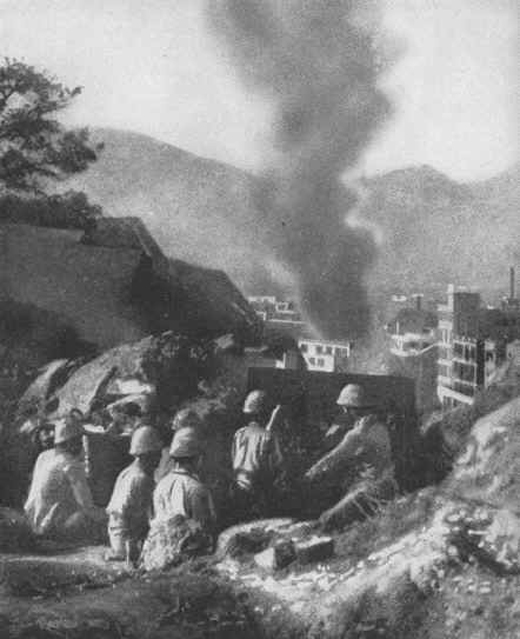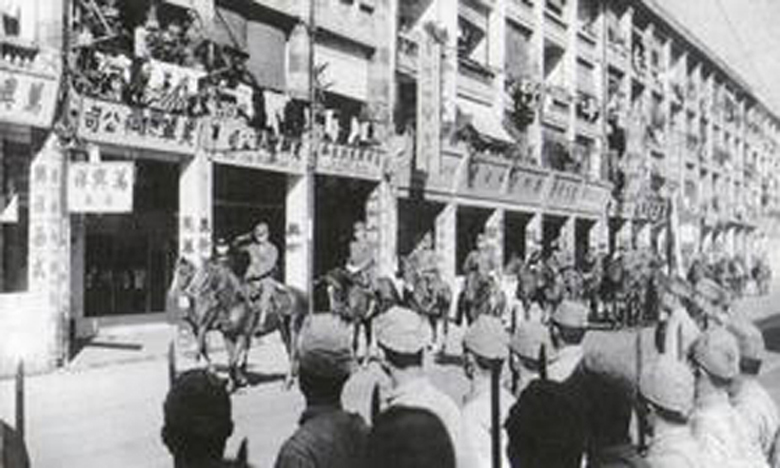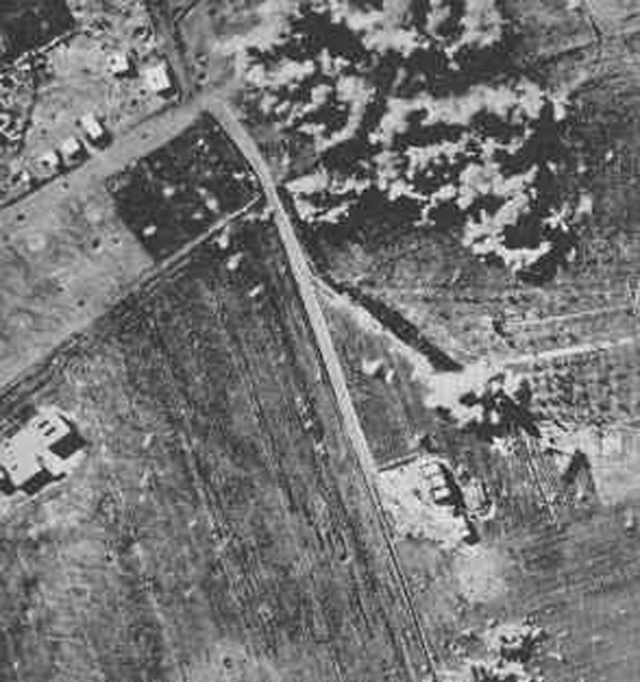Air Operations, CBI
3rd AVG Fighter Squadron P-40s down 16 Japanese Army Ki-30s and 8 Navy A6Ms over Rangoon between 1200 and 1245. Flight Leader Robert P. Hedman, a 3d AVG Fighter Squadron P-40 pilot, achieves ace-in-a-day status when he downs 4 Ki-27 'Nate' fighters and an A6M Zero near Rangoon during the encounter; and Flight Leader Charles H. Older, another 3d AVG Squadron P-40 pilot, achieves ace status when he downs 2 Ki-21 'Sally' bombers near Thongwa and an A6M Zero over the Gulf of Martaban.
[Battle of the Atlantic
The British steamer Cormead (2848t) sinks on a mine about 3 miles north of Lowestoft. The entire crew are rescued.
[Borneo
The Indian garrison retires towards Dutch Borneo after some heavy fighting near the Kuching airport.
[Britain, Home Front
King George VI broadcasts a Christmas message to the Empire: 'Never did heroism shine more brightly than it does now, nor fortitude, nor sacrifice, nor sympathy, nor neighborly kindness.'
[Burma
The Chinese announce they will no longer cooperate with the British and withdraw all Chinese troops from Burma. Chiang Kai-shek became angry when the British failed to release ammunition aboard the American ship Tulsa which was in Rangoon harbor. The munitions were shipped for Chinese use but the situation in Burma caused consideration for redeployment.
[China
The Japanese open an offensive against Changsha, in the Hunan province.
[Eastern Front
The Soviet offensives continue to achieve successes. The German forces are now down to 75 percent of their strength in June. Their losses in tanks have been especially severe. Guderian has less than 40 tanks in his whole command. In Hoeppner's Pzr Group only one of the 4 arm divs has more than 15 tanks. Reports continue coming in speaking of German troops suffering from cold and frostbite. Guderian is dismissed by Hitler for refusing to obey his 'Halt Order'.
In Leningrad about 3,700 Russians die of starvation. It is sadly ironic because the daily bread ration was increased due to new supplies reaching the city.
In the southern sector the Russians begin a series of violent attack against enemy positions especially the Italian expeditionary force, and in the eastern Crimea.
NORTHERN SECTORWith temperatures well below zero, the citizens of Leningrad struggle to endure the privations of the siege. On this single day, 3,700 people die of starvation, hypoothermia or exhaustion. The daily death rate in the city is 1,500, very few due to German bombs or shells; most to starvation of hypothermia.
CENTRAL SECTORAgainst the northern wing of Army Group Center the 39th Army completes its concentration, having brought together 5 rifle divisions. Other Soviet attacks begin to falter, the 20th and 16th Armies stalling as they try to cross the Lama and Ruza Rivers.
Guderian becomes the latest victim of Hitler's purge, being dismissed from the 2nd Panzer Army. Hitler condemns Guderian for his failure to halt the Soviet attacks, an unreasonable charge given the exhausted state of his army. Gen Schmidt is appointed to command the 2nd Panzer.
SOUTHERN SECTORWith German attention fixed firmly upon Sevastopol, the Soviets prepare to launch an offensive into the Kerch peninsula. Units of the Trans-Caucasus Front aided by the Azov Flotilla set sail from the Kuban in 2 groups which are to land north and south of Kerch. Group A consists of the 44th Army with 23,000 men, 30 tanks and 130 artillery pieces, while Group B has 3,000 men of the 44th Army together with 13,000 of the 51st Army. The landing is due to begin on December 26.
[Germany, Command
For his retreats and insubordination, Hitler dismisses Guderian as commander of the 2nd Panzer Group. He is replaced by Gen Rudolf Schmidt.
[ Japanese Artillery in Action |
 |
Hong Kong
The British forces in Hong Kong capitulate in the evening after a siege lasting 17 days. At 9:00a.m. the Japanese present their surrender terms, proposing a 3-hour cease fire. Receiving no reply they open fire again at noon. At 3:30p.m., recognizing the hopelessness of the situation, the British commander gives the order to surrender. It is carried out at 5:30p.m. The Chinese population of the island, with their ancient prudence, and also under the influence of Japanese propaganda heralding the 'common Asian sphere of prosperity', gives the victors at triumpant welcome, many of the waving Rising Sun flags.
Commonwealth losses in defending Hong Kong total 11,848. Many civilian were also killed and wounded. The Japanese casualties were 675 killed and 2,079 wounded.
Japanese Troops March on Queen's Road, Hong Kong |
 |
Midway
The garrison is strengthened at Marine Fighter Sqadron 221 flies in from the USS Saratoga.
[North Africa
The British 8th Army reaches Benghazi and Agedabia as the Axis retreat continues. A large number of Axis troops are cut off at Sollum and Bardia.
|
|
After capturing Derna, the Eighth Army continued its pursuit of the retreating enemy forces. The main German Army was in the Soluk area, south-east of Benghazi while Italians were concentrated along the coast north-east of the town. On December 21 British forces captured Cirene and Apollonia and exerted strong pressure on the Italians covering Benghazi, and on the next day mobile columns reached the coastal plain on the Gulf of Sirte. On Christmas Eve Benghazi was entered by the Royal Dragoons after it had been evacuated by the enemy, and the nearby airfield of Barce was captured by Indian troops. On the same day a mixed mobile column occupied Benina. With the fall of Benghazi the whole of Cyrenaica except for the isolated enemy garrisons at Sollum, Helafaya and Bardia came under British control.
[Philippines
The US forces in north Luzon are attacked on their second line of defense at the Agno River. The 71st Division (Philippine Army) withdraws from the eastern flank of the line to reorganize. The South Luzon Force begins a northward withdrawal toward Bataan. The Japanese, in close pursuit, seize Sampoloc and Pagbilao. During the night, Japanese troops from Urdaneta succeed in crossing the Agno near Tayug.
The US submarine Sealion (SS-195), damaged in the air attacks at Cavite on December 10, is sunk by US forces.
Rear Adm F. W. Rockwell is appointed to direct all US naval activities in the Philippines. The Japanese advance from the north of Luzon and succeed in crossing the river Agno at a point where the American line is not consolidated. The American forces defending the southern part of the island retire to Bataan peninsula closely followed by the Japanese who occupy Sampoloc and Pagbilao.
In the Sulu Archipelago the Japanese complete their occupation of Jolo.
[
